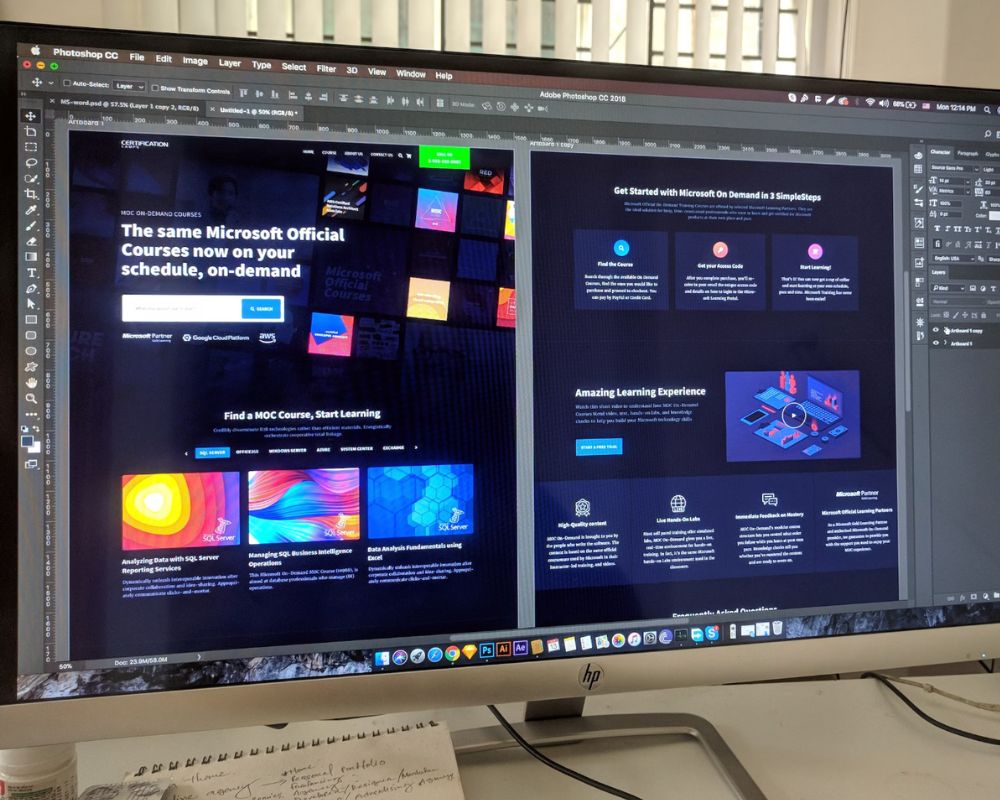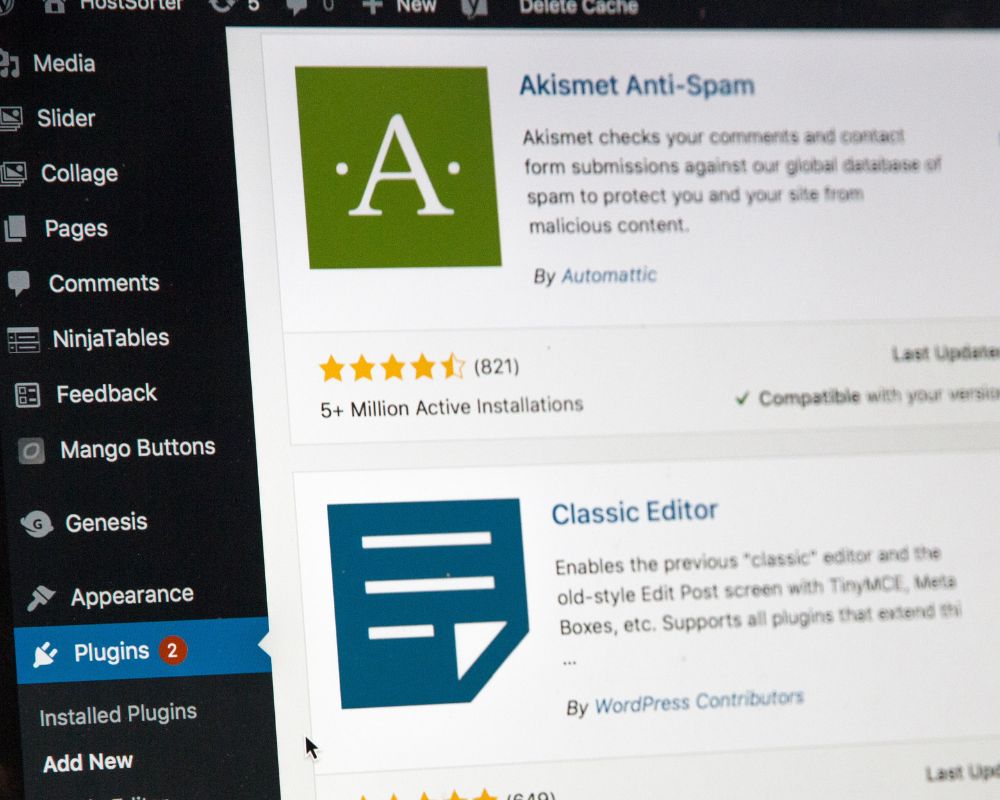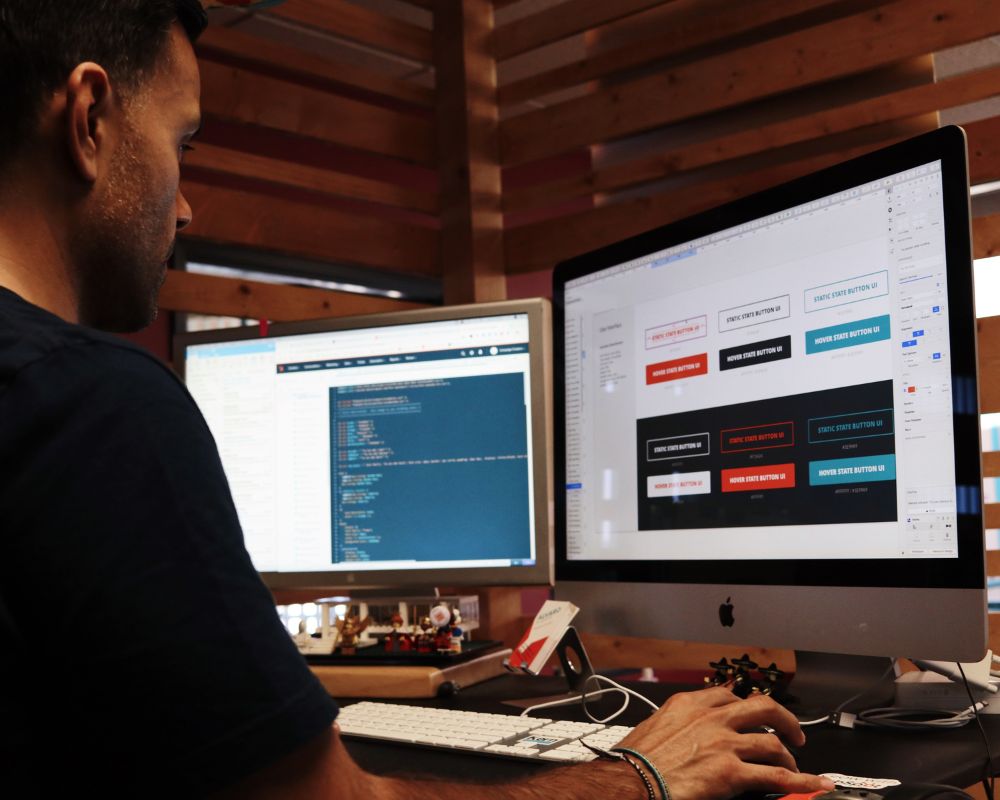Do you really need a new website, or is an update sufficient? Keep reading to discover the best solution for you. In this article, we’ll explore the factors that indicate when it’s time to create a new website and what makes a website worthy in the first place.
10 Signs your website needs a redesign
Ten of the top signs you need a new website include:
- Your site is not mobile responsive
- Your site has a poor website speed
- You’ve noticed a rising bounce rate
- Your branding doesn’t reflect your current business
- Your site’s design lacks visual appeal
- The navigation is affecting the user experience
- There are content limitations on site
- Your site isn’t up to date with trends and industry standards
- Your current site doesn’t allow for SEO optimisations
- Broken links are affecting your site
Continue reading to discover why these factors are essential to consider when determining whether it’s time for a new website.
1. Lack of Mobile Responsiveness
In today’s digital sphere, where the majority of users access websites through their mobile devices, having a mobile-friendly website is extremely important. Having a mobile responsive website not only improves user experience, but it also positively impacts search engine rankings, increasing visibility and accessibility.
2. Poor Website Speed
The need for speed cannot be overstated. Users expect fast-loading websites, and any delay can lead to your visitors getting impatient and abandoning the site, which will ultimately result in reduced conversion rates and lower search engine rankings.
3. Rising Bounce Rate
In website analytics, a “bounce” signifies a single-page session within a site. Bounce rate is given as a percentage, and the number of single-page sessions gets divided by the total sessions on your website. A bounce rate exceeding 56% is worth noting, as it could point to user difficulties in navigation, technical glitches, or the presence of low-quality and poorly optimised content from an SEO standpoint on your website.
4. Branding
Consistency in branding across all touchpoints is key. If your website no longer aligns with your brand image or message, it might be time for a revamp. Every detail, from the logo to the chosen font, should mirror your brand image, your company’s mission, and the services you offer.
5. Visual Appeal
A well-designed website is essential. A good design makes all the difference and is a significant factor in the content-viewing experience.
6. Navigation
When users can navigate your website fairly easily, the overall user experience improves. If users struggle to find what they need quickly, chances are, they’ll probably leave, which impacts bounce rates and overall satisfaction.
7. Content Limitations
Fresh, relevant content is crucial for engagement and SEO. By ensuring that your content is regularly updated, you can keep visitors coming back, which ultimately gives your search engine rankings a boost.
Making basic content or design alterations to your website, such as adding a blog post or modifying a product description, shouldn’t demand website developer expertise. If your site relies on a platform that’s challenging to navigate, it may be time to switch to a new website built on an intuitive, user-friendly content management system.
8. Keeping Up To Date with Trends and Industry Standards
Having an aesthetically pleasing website that’s up-to-date with industry expectations is so important. Many don’t realise that an outdated design can drive potential customers away, so employing regular updates can help to ensure your website remains appealing and functional.
Ensuring consistency in your brand image across all channels can help you stay ahead of the competition. Your website also needs to be kept up-to-date with current industry trends.
9. Lack of SEO
SEO is crucial for visibility. A well-optimised website increases traffic and improves search engine rankings, benefiting your business. If you’re wondering, “Does a website redesign affect SEO?”, the answer is absolutely – it’s just one of the benefits of website redesign, as it can improve user experience, which indirectly affects SEO. Factors like bounce rate, time on site, and user engagement signal to search engines the quality and relevance of your site’s content.
10. Broken Links
Broken links hinder user experience and damage SEO efforts. Regularly checking for and fixing broken links ensures a smoother navigation experience and improved site credibility.
Website Redesign FAQS
What is website redesign?
Website redesign is the process of updating and improving a website’s design, structure, and functionality to enhance user experience, modernise its appearance, and ensure compatibility with current technologies. It usually involves changes to layout, navigation, and content to better meet user needs.
What are the stages of website redesign?
The stages of website redesign typically include; planning, research, design, development, testing, launch and maintenance.
When should you refresh your website?
Industry best practice suggests a website refresh every 2-3 years. This allows for the reevaluation of content, the opportunity to adapt to newer technologies, and a boost in your website’s performance.
These adjustments can keep your site up-to-date and competitive, aligning it with ever-changing user expectations and search engine requirements.
How do I know if I need a new website?
Signs you need a new website include: high bounce rate, slow loading times, poor user experience, lack of mobile responsiveness, poor SEO performance, outdated content and outdated design.
Why do I need a new website?
Five reasons you may need a new website include: 1. To improve navigation, 2. To update your website’s appearance to make a great first impression, 3. To improve mobile-friendliness, 4. To improve user experience and 5. To improve navigation.
How do you check if a website is outdated?
A website might be considered outdated if it doesn’t use HTTPS for security, has a design that isn’t mobile-friendly, loads slowly, or relies on old technologies. A poor user experience, such as difficult navigation, can also be a sign.
What are the problems with old websites?
Old websites can have several issues, including security vulnerabilities, outdated design, poor mobile compatibility, slow loading times, and incompatibility with modern browsers. They may also suffer from poor SEO performance, be difficult to maintain, and may provide a bad user experience due to clunky navigation and broken links.
How much should website redesign cost?
The cost of website redesign varies depending on the complexity of the project. However, you might be pleasantly surprised to find out hiring a web design agency can be more affordable than you might expect! Contact us to get a personalised quote.
Time for a website redesign?
Find out more about the web design process, what to include in a website scope and website brief template examples in our guides.
At Yellowball, we understand that keeping your website updated helps to boost user experience, strengthens your online presence, and contributes to sustained business growth. Yellowball is a web design agency based in London, UK – want us to help you kick off your website redesign project plan? Wondering about the average cost of a website redesign? Contact us today, and discover how we can help you enhance your online presence.










